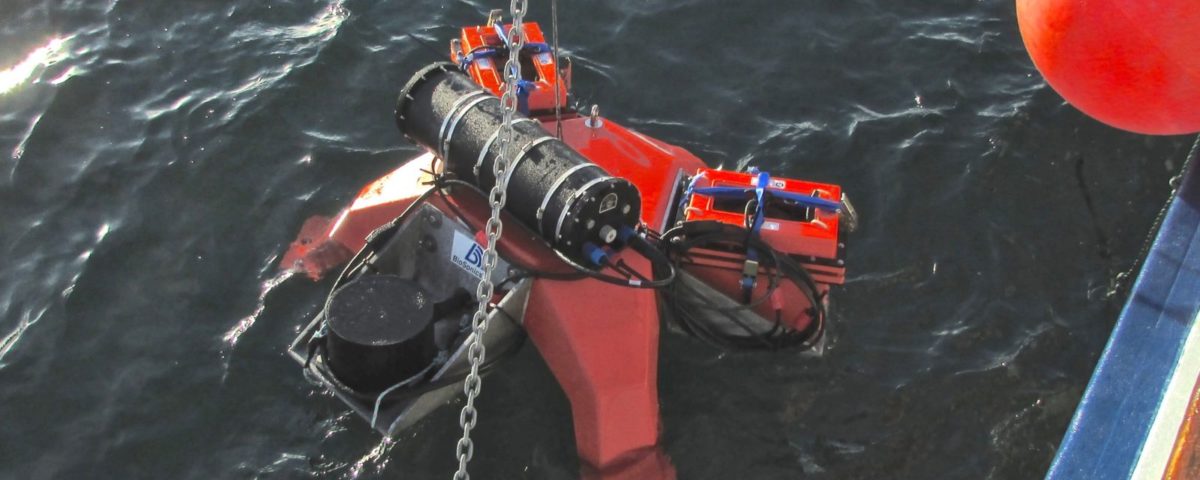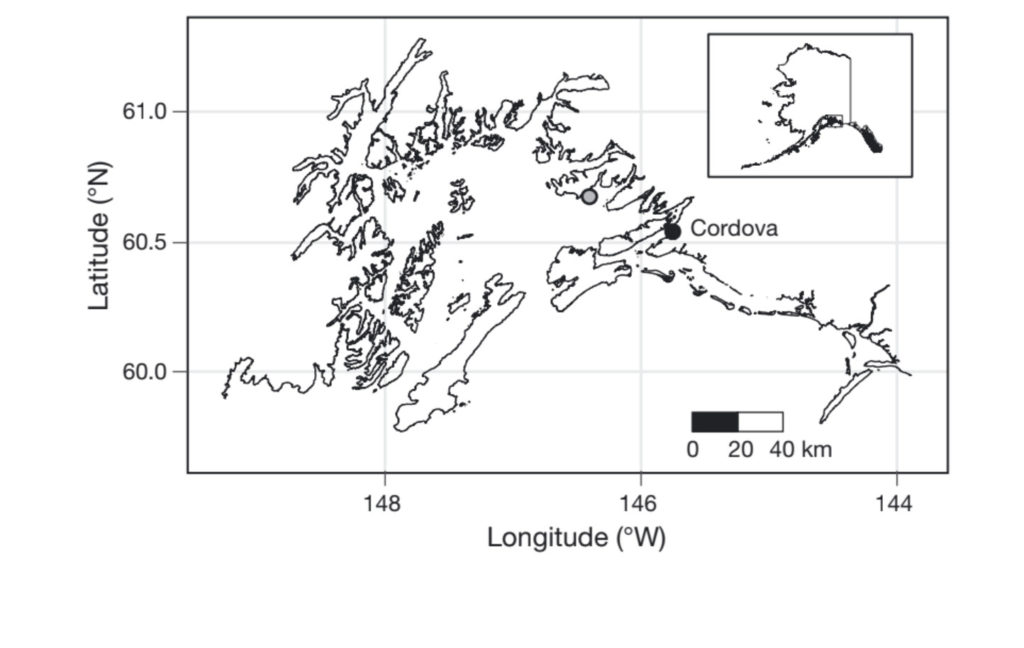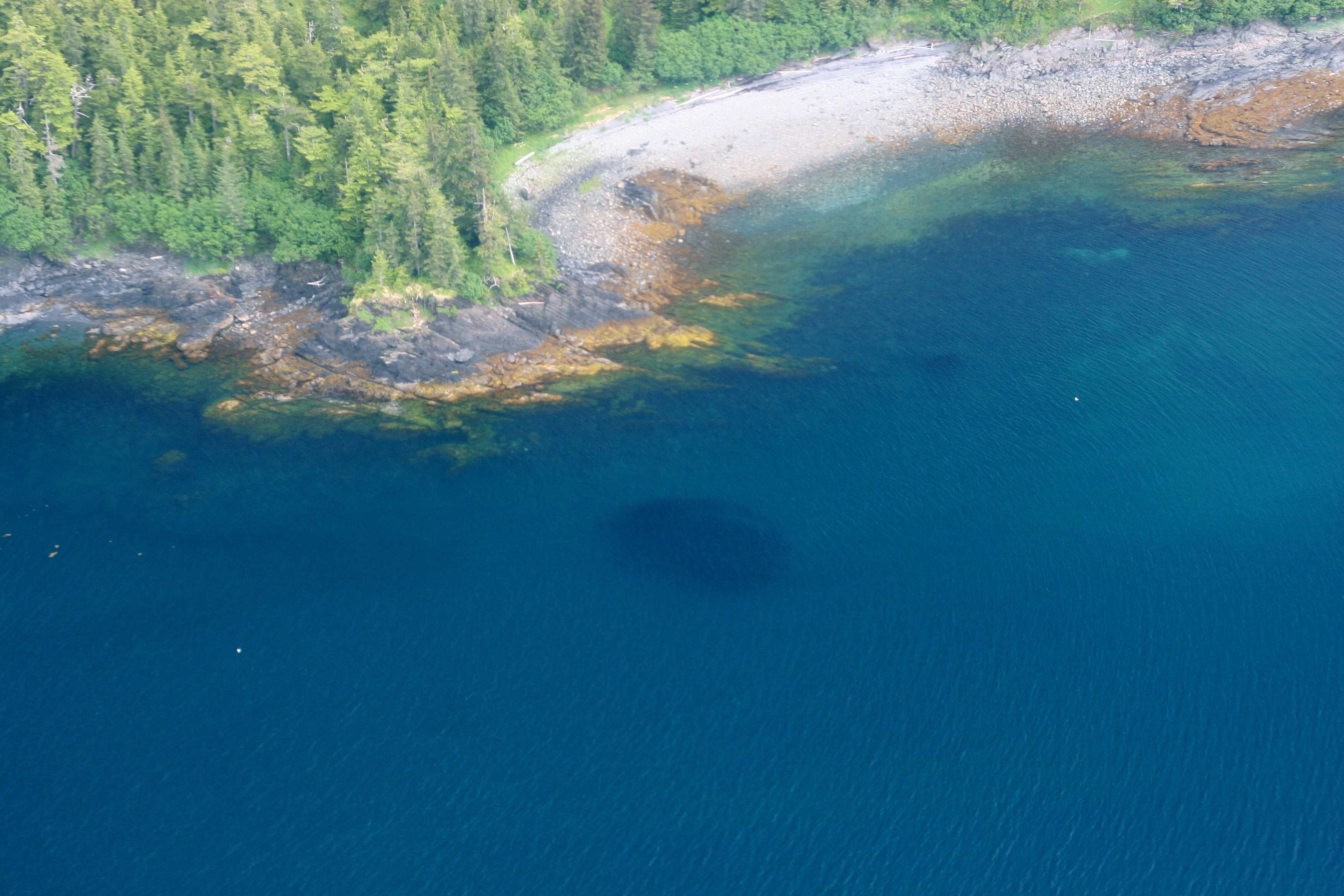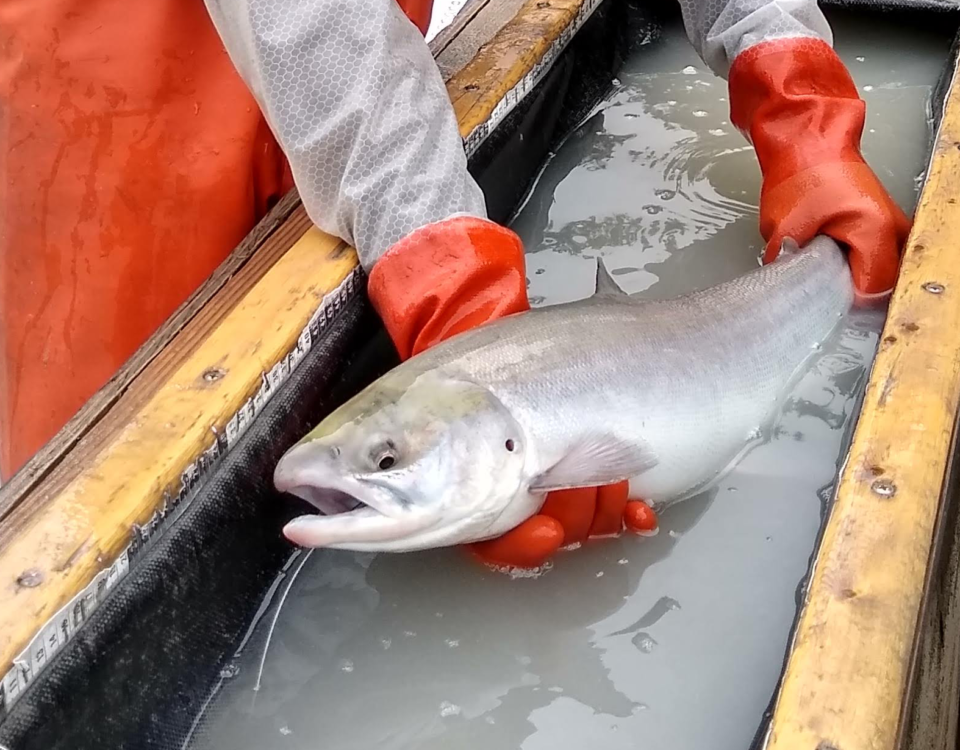Pacific Herring Response to Predators

Dr. Pete Rand publishes work on Prince William Sound Pacific herring’s response to predators.
By Teal Barmore
The spring spawning event of Pacific herring in Prince William Sound is an awesome spectacle. Sea lions, seabirds, and whales come from all around to feast on the aggregation of herring. Even scientists like Dr. Pete Rand and his colleagues in the Herring Research and Monitoring program come flocking to study the herring. During this time Pete can usually be found aboard the Auklet, doing acoustic surveys to estimate the annual spawning biomass. The acoustic surveys, along with the Alaska Department of Fish and Game’s aerial surveys and a variety of other factors, inform resource managers on how and if the species is recovering.
After a year of running the acoustic biomass surveys for the Prince William Sound Science Center, Pete got an idea for another way to observe the fish in order to gain a better understanding of how the fish are moving across physical space over time and how they are responding to predators. Results of this study are now out in Marine Ecology Progress Series.
“Predators” has almost become a buzzword when talking about the recovery of herring in Prince William Sound. As herring abundance has gone down there is concern that they are more susceptible to predation and that predators could be keeping the population down. How herring are responding to those predators is an important factor in determining the status of the species and their recovery.
“We wanted a basic description of how they were responding to whale, sea lion, and seabird predation and a description of school formation day and night and under different levels of predation,” Pete said. He talked to Biosonics, a company that makes scientific ecosounders, about his idea. They had just designed a new system for an autonomous sonar and they wanted to have trials in different areas, so Pete was in luck. They lent him the system for the spring spawning season of 2016.
This system, which the crew ended up referring to as The Spider has a tripod mount that sits on the seafloor looking up. The underwater housing contains four batteries and a transducer that sends out sound waves and receives the echoes, recording the information that comes back. It was set to record for one hour, then sleep for two constantly over a two-week period. Pete, with the help of the Auklet’s captain Dave Janka (Auklet Charter Services), dropped The Spider in 130 feet of water where the largest herring aggregation in Prince William Sound stage prior to spawning and left it to record as the crew completed their normal spring spawning biomass survey.
When the results came back it was clear that his efforts had not been wasted. With The Spider’s sonar beam Pete was able to capture the predator tracks he was looking for. “We got all these sinusoidal tracks of seabirds moving through the beam and we could detect sea lion tracks—you could see all the bubbles from the dives of the sea lions.” Pete was even able to measure swim speeds of individual herring and predators. What he observed was that the herring go deep as the predators go deep, and the swim speeds of the fleeing herring are correlated to those of the predators chasing them through the water column. These results were no surprise, but are the first of their kind in Prince William Sound. Nearly all the predatory events occurred under very low light conditions or at night—so sonar was ideally suited to document the nocturnal habits of these predators. Only limited conclusions can be drawn from this one sampling site, but it contributes a basic description of the Prince William Sound herring population’s response to predators which can be added to over time.
Pete hopes that in the future he will be able to incorporate more autonomous sonars into their spring spawning survey. “If we could get enough of these deployed, we could get a better handle on the distribution of the entire herring aggregation, how they are responding to all predators, and how predation intensity is changing over time,” Pete says. Many point to the growing population of humpback whales as a potential factor limiting recovery of herring. While whales were in the area during this study, none were detected in the sonar data. Pete writes in his paper that this “could provide a new perspective on how herring respond to predators in both space and time and how their abundance may change over time as a result of predatory impact.”
Dr. Rand’s paper is available upon request.
Related Links:
Herring Research and Monitoring
Adult Biomass Surveys
Hydroacoustic Spawning Biomass
Aerial Spawn Surveys
Boom and Busted: Lessons from Alaska’s Mysterious Herring Collapse






